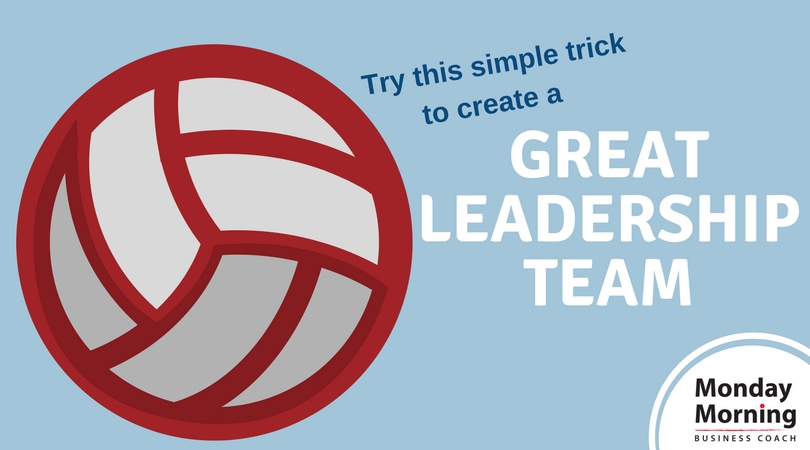
While it makes sense that they would move up in leadership as their skills grow, the transition to higher levels of leadership requires a major shift in their approach and mindset. In particular, they need to foster an environment of shared ownership for the success of the business as a whole, not just in their area of responsibility.
Great leadership teams understand that, together, they own the success of the whole.
Yet, when you ask people to describe the leadership teams that they are a part of, few describe a great team that works together to create organizational or departmental success while creating success for their individual areas of responsibility. Few understand the kinds of things they must communicate so that they are making decisions with an awareness of how those decisions ripple through the other areas of the organization.
Developing a great team happens over time as individuals build shared history, succeed in the face of significant challenges, fail in ways that hurt, and learn to disagree in ways that support them working together to create success.
That said, we have found a simple action that can accelerate this movement toward greatness: a simple, almost silly-seeming, action that has a profound impact on team success. Just place a volleyball-sized ball on a drinking glass at the center of the table when the team meets.
Sounds crazy, right? But consider this…your organization is like this volleyball on the table.
There are areas of your organization that are hard to see, just like the part of the ball sitting on the glass and the part of the ball at the top in the center. With effort, you can see those areas but day-to-day, as you sit in your seat around the leadership team table, those areas are hard to see. And from your vantage point, you, individually, can only see about one-third of the ball. As is true in your day-to-day role, you actually see a very small slice of the overall organization.
With the volleyball – your organization at the center of the table – you can see that:
- You need enough people, and the right people, at the decision-making table to ensure that someone has eyes on all aspects of the organization or at least as much as you can see.
- If you aren’t communicating with your team members regularly and thoughtfully, you will be missing two-thirds of the data about what is going on.
- If you make significant decisions without collaborating with the members of your team, the ripples of those decisions could impede the success of other teams and the organization.
- If you’re the leader of the team, you need your team to be engaged, to understand that they hold the whole, and to communicate effectively. Then, when you meet individually and need to make a decision quickly, there is wisdom about what is happening in the whole to arrive at the best outcome.
- The “we” of the team matters more than you could imagine.
We’ve brought volleyballs to more organizations than we can count.
Meeting after meeting the ball sits in the middle of the table and the team begins to have different conversations about the whole. They start sharing information that could have rippled problematically through the organizations. And they understand that having one another’s backs means supporting as well as challenging each other to create success in both the individual areas of responsibility as well as in the whole.
Give it a try – not just one time but for 6 months or a year. We’ve seen over and over again that great leadership teams must collaborate to ensure success of the whole. If your team is struggling let us know – we would love to help.

